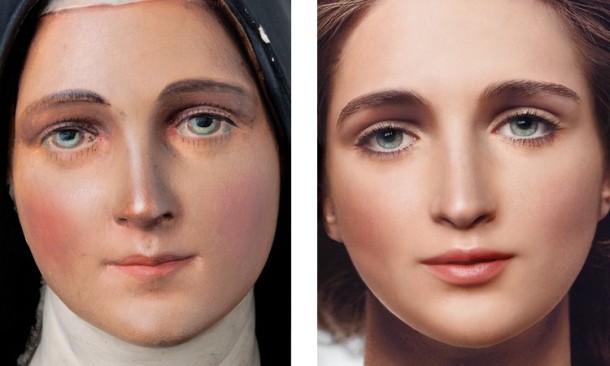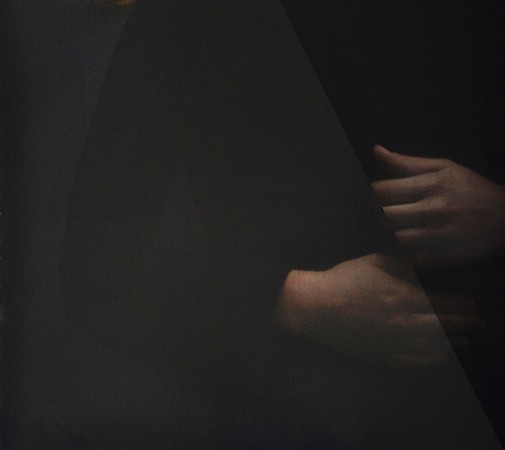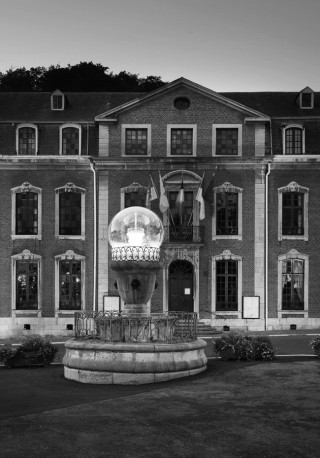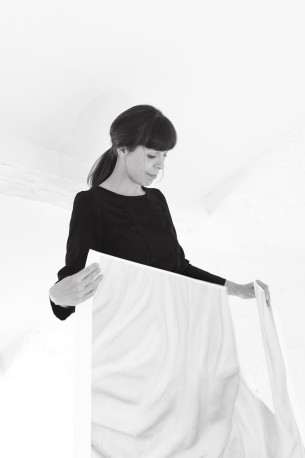World Fine Art Professionals and their Key-Pieces, 65 - Sophie Langohr
World Fine Art Professionals and their Key-Pieces, 65 – Sophie Langohr
It’s all about the image in Sophie Langohr’s art. The image reaches and affects all areas of personal, social and political life. She is in search of what she calls iconographic codes.
In the process she manipulates existing images and creates new images. In both cases, she appropriates images which are in our memory, consciously or unconsciously. She parodies them, in a delicate way, she undermines them and distils the emotion. Langohr: “By examining the media industry, the conversion to consumerism and image marketing, I take out the mystery.”
Child of the visual culture
Het work refers to art history and heritage elements. “Neo-classical reliefs, rococo motifs, religious sculptures, baroque curtains, fun things around the spa town of Spa, nude paintings from the nineteenth and twentieth century. I get to work and make my own versionin photo series, such as Les Camées (2007), Fleurs, oiseaux et fantaisies (2009), New Faces (2012), Glorious Bodies (2013), Drapery (2013), Touching Up (2014-2015). And also in works in public spaces such as Jolité (Spa, 2010), Nudes (Doornik, 2014), the municipal councilors (Thuin, 2015).”
As a child of the visual culture she was part of the large-scale marketing of the transnational firms. Sophie Langoher: “I myself was at a young age influenced by the impressive images of luxury. I was fascinated by the brands, also intellectually. What was the seduction? I started to investigate not only the imagery of advertising, but also linked it to the popular canonical images of art history, especially the rich and sensual Catholic iconography.”
The muses of fashion
During the lectures of Cultural Studies at the university, she learned that all objects have an immaterial power and that marketing is trying to strengthen that power. “You see this most in the production of luxury goods, where a product evokes different thoughts. Bourdieu is talking about ‘the magic’, Agamben, the Italian philosopher, about ‘the glorification of goods in a magical object’ and Jean-Michel Bertrand about ‘the transubstantiation of an object’. With my approach I like to show , with some irony,the parallel between this world and the art world.”
In the series New Faces she confronted the faces of ‘the muses of the fashion’ with the maidens of the sulpicienne styl., the Maidens at the stained glass windows of Saint Sulpice in Paris. “I tried to pick the common of those two styles, more than a century apart. Both were based on seduction and conquest, even though they seemingly had opposite goals.”
Diptychs
From the storage of a museum she took fifteen Mary statues and various saints. “They came from the Saint-Sulpice tradition, but had not made the spotlights of the museum. By the Second Vatican Council they were condemned to oblivion. However, they represent the most shoddy in the area of the sacred image at the time that it started to be semi-industrially produced. I have a series of close-ups of their soft and outdated faces which translate essential sentimentality. And on the other hand I found on the internet as many faces of Muses that today embody the major perfume brands, cosmetics and leather goods.”
“How closely the two resemble each other! With a little editing, now very common in fashion photography, I emphasized inthe similarity of the faces in diptychs. The models were both fashion models ánd actresses ánd virgins and saints. The digital scalpel is precise while, as befits a skilled restorer, I have committed some interventions here and there. The transformation and the miracle that it brought goes parallel to the logic and the result of today’s image software.”
Arty advertising
The advertisments for luxury and beauty today have cultural pretensions. It tries to be ‘arty’, to bask in the glory and mystery of the creative process. “I confronted the faces of the muses in advertising with the most media-friendly face of the history of art: the Holy, Immaculate Virgin Mary. Who would better embody the glory and mystery of creation, of transcendence and ascension? She is timeless. She evokes references, codes, standards, affections, protection, history, ritual and worship. All concepts that are an obsession for communication experts of fashion. The sulpicien art reflects a materialistic age in which attempts were made to make religion enjoyable, to bring it close to the people. With such dedication paradise is within reach.”
With the digital scalpel she creates stereotype images of women. Sophie Langohr: “It is like we take a step form Saint Sulpice to sain supplice, the healthy food, a type of cosmetic surgery to keep the face in good shape under the pressure of the hype of the unattainable standard. My work is about sublimation, guilt and mortification. It poses fundamental ideological questions about the image of women in our society. Thre is an obsession with the appearance. I make a report of it in my work in a poignant way. “
Image manipulation
Sophie Langohr (1974) graduated from the University of Liege in Roman philology. Then she went to the Academy of Fine Arts in the same city. She is an autodidact in the field of photography and image manipulation.
www.sophielangohr.be
http://ifthenisnow.eu/nl/verhalen/de-wereld-van-de-luikse-kunstenaar-6-sophie-langohr
Disclaimer: The views, opinions and positions expressed within this guest article are those of the author Walter van Teeffelen alone and do not represent those of the Marbella Marbella website. The accuracy, completeness and validity of any statements made within this article are not guaranteed. We accept no liability for any errors, omissions or representations. The copyright of this content belongs to Walter van Teeffelen and any liability with regards to infringement of intellectual property rights remains with the author.





















The opinions expressed by individual commentators and contributors do not necessarily constitute this website's position on the particular topic.